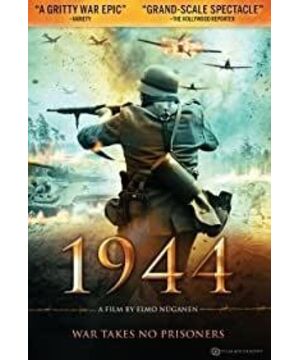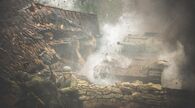There are many such small countries in the world, such as the three small countries along the Baltic Sea. They are between two powerful civilizations. From the twelfth century onwards, from resisting Prussian power and forming their own culture, to the rise of the Russian Tsarist Empire, these three Baltic countries, that is, in the squeeze between German culture and Russian culture under pressure. From language, culture to religion, they are deeply imprinted by these two cultures. The tsar took these countries into his pocket by force, and after the Soviet Revolution, the newly established Soviet government ceded them to Germany and finally made them independent countries.
In 1940, according to a secret agreement between Germany and the Soviet Union, the Soviet Union invaded the three countries and brought them into their own territory. After Germany invaded the Soviet Union, it reoccupied the three countries. Embarrassingly, however, when German troops entered these three small countries, the local people welcomed them as liberators. When the German army was defeated in the Soviet Union and the Soviet army counterattacked, fierce battles were launched in these three countries. The film "1944" shot last year by Estonia, the smallest of the three Baltic countries, is about this history.
The investment in this film is not large, only a mere 1.5 million euros, far less than most films in China. However, it does not hinder the film's performance of the grand scenes. The war scenes are quite well shot, the grasp of history is very high, and the portrayal of the characters is also quite distinctive.
The film observes the war from two different perspectives, the complicated situation in Estonia at that time, and the different psychological states of people who were between the two forces at that time. The movie begins with subtitles telling the audience that after the Soviet Union invaded Estonia in 1940, they recruited more than 50,000 Estonians to join the Soviet Red Army; and after Germany invaded Estonia, more than 70,000 Estonians joined the German army, the German army. A dedicated Estonian division was also formed. In 1944, the situation of World War II was reversed, the Soviet Union advanced and Germany retreated, and the Soviet and German armies faced each other again in Estonia, and most of the people standing on the front line of the confrontation were Estonians. According to statistics, during the entire World War II, a total of 220,000 people were killed in Estonia, accounting for one-fifth of its total population.
At the beginning of the film, the war is cut from the point of view of the Estonian SS. In 1944, it was the end of World War II. After several years of brutal fighting, the outcome of the war is already in sight. The German army that once trampled on the arrogance like a tiger with iron hoofs has long since lost its momentum. The soldiers of the Estonian SS in the movie could only hide in the trenches and fight back against the Soviet attack. We can know from the movie that most of these young soldiers volunteered to join the army. They were not interested in Hitler, and there are scenes in the film where they teased pictures of Shimo. They joined the German army, but they regarded the German army as the liberator of Estonia. They just wanted to use the strength of the German army to deal with the red beasts from the east.
This huge neighboring country to the east has always been a nightmare for Estonians, especially after the tsar became a Soviet. Taking advantage of the chaos of the First World War, the Estonians staged an uprising in early 1918 and turned to Germany for help, forcing the Soviet Union to sign an agreement with Germany and finally to become independent from the Soviet Union. After the start of World War II, Germany and the Soviet Union signed a non-aggression agreement, and Estonia became a victim of great powers, lost its independent status, and was re-incorporated into the Soviet Union, where the Soviet Union established a Soviet Republic and carried out a large-scale socialist transformation.
That was a tragic page in Estonian history. Although it is only a short period of one year, many people have encountered the fate of separation from their wives and children. Many soldiers in the film are victims of this red terror. Many people are alone and have no worries. Therefore, when the German army entered Estonia in a mighty manner the following year, the scene at that time seemed to be welcoming the Wang division. In fact, this kind of thing was not an isolated case in Eastern Europe during World War II. Even when the Germans invaded Ukraine, they were welcomed by the locals. History is sometimes difficult to look at, and there are many embarrassing details, but a careful analysis is actually logical. This is where history gets complicated.
From the speeches of the group of German soldiers in the film, we cannot see that they have any shame about being the German SS, they just feel that they are fighting for themselves and their motherland. In their eyes, the natural threat from the west is far less than that from the east, and they just keep mentioning that thousands of red elements are coming. This is what they are most worried about. Although the Soviet regime in Estonia has only existed for a year, it is enough to make them remember it deeply. These young soldiers fought very bravely and had their own rules. The German perspective in the film allows the audience to understand the complexity of the Estonian war situation.
Another perspective of the film is from the Soviet Army. This Soviet army is also composed of Estonians, but compared with the German army in equipment and military discipline, there is a clear gap. The first half showed up, just on the battlefield, basically just as a target for the Germans. As soon as the second half came out, it was an encounter. But as soon as the encounter started, it was called off because both sides heard each other's accents. After all, they are all compatriots, and there is no need to sacrifice their own lives for the interests of others. This behavior was questioned by the political commissar of the Red Army, who believed that these Estonian fighters were soft-hearted towards fascists. Although the commissar himself is Estonian, he is also complaining that the Soviets are prejudiced against Estonians, which hinders his promotion. There was no expression on his face, no mercy for anything suspicious. He developed a number of secret eyeliners in the army, collecting the grievances of soldiers and even officers for him.
This is a rigid and rather contradictory figure, representing the general Western perception of such figures in the Soviet Red Army. During World War II, Hitler ordered that the captured political commissars of the Red Army would not enjoy the treatment of prisoners of war, and they would all be shot if they were caught. They believe that these personnel engaged in political and ideological work in the army not only promote red ideology, but also coerce soldiers to carry out actions that violate human nature, so they are considered extremely sinful. Interestingly, in addition to the Soviet Union during World War II, the Nazis also set up SS troops to protect the army of the National Socialist Workers' Party. Later, the stipulation that all political commissars should be executed by firing squad was resisted by the German front-line officers and soldiers, so it was cancelled. However, the political commissar in the movie was shot and killed by his subordinates because he forced his subordinates to shoot several German soldiers. The half-eldest were all Estonians, who had escaped from the defeated Germans and had surrendered to the Soviets. The commissar shot down the soldiers who refused to shoot the children, sparking outrage.
The final battle ended with the Soviet army winning the Battle of Narva in 1944 and successfully advancing into Tallinn, the capital of Estonia. For those Estonians who joined the German army, they were, of course, full of frustration. Most of their comrades died in battle, and their relatives did not know where they were. Even if they survived, as the defeated side, they were quite clear about what kind of fate would follow. The Estonians on the side of the Red Army were not happy, despite the victory. Instead of the German army occupying their own motherland, it was the Soviet army that was desperately resisting the motherland before the war. The Soviet rule of Estonia that year caused severe trauma to too many people, and the stormy revolution touched every family. The outcome of the war in 1944 was a sense of victory for all Estonians.
We have seen a lot of movies about World War II, and for Western audiences, the victory of World War II is the end of the story. And for many countries in Eastern Europe, this is just the beginning of new misery. The extent of this suffering is no less than the suffering caused by war. In recent years, Eastern Europe has also gradually shot films in this regard, reflecting the hesitant and helpless mood of the Eastern European people at that time. Among them, The Fate of Rosa, shot in Poland, tells the most tragic story. In Eastern Europe, between the post-war Soviet Union and the Western European camp, their fate is actually constantly being crushed by politics. With the Soviet Red Army tanks brought into their land, not only the old hatred of the great empire in history, but also a system that terrifies them, and this system will be tested on them for forty-five years, And these countries, which had close ties with the West, were blocked behind a thick iron curtain.
So is Estonia. Subsequent history soon confirmed the fears of the Estonians at the time. After World War II, Estonia lost its independent status and became a member of the Soviet Union again. Stalin, in order to punish the Estonians (actually the same for the entire three Baltic states) cooperated with Germany in the war, carried out a brutal cleansing of the Estonians many years after the war, and many people died or were thrown into prison. In order to prevent them from resisting again, many families were forcibly relocated to the cold and deserted areas of Siberia in the Soviet Union, and at the same time many Russians were moved in. This is the most heart-wrenching history for the people of the three Baltic countries. They not only lost their independence, but also lost their homeland. At the same time, they completely lost their personal freedom and became the experimenters and victims of a new system. So, when the conditions were right in 1989, they did not hesitate to break away from that crumbling empire and turn west firmly.
However, can they really get rid of the historical fate of being crushed, and can they exist freely in the cracks of great powers? Judging from the current political situation, I am afraid it is still quite difficult.
View more about 1944 reviews








